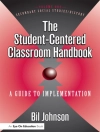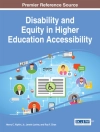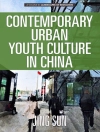With contributions from over 80 of the biggest names and rising stars of the field, this Handbook is an essential resource for anyone interested in the contemporary, emerging, and evolving practice of mixed methods research and scholarship. Exploring new and novel applications of existing mixed methods research design practices, the handbook provides comprehensive integration guidance while showcasing how design innovations inspire and contribute to investigating previously under-researched social issues and populations. Through its unique focus on design and the diverse contexts in which mixed methods research is being applied, this Handbook prepares researchers for the changing conditions in which they will conduct studies. Newcomers and seasoned mixed methods researchers alike will find this Handbook a go-to source for tools to think and act ‘complexively’ and creatively in research design. Using accessible language and illustrative examples, this Handbook is written for those with various roles and experience in mixed methods research design. The in-depth discussions led by the interdisciplinary group of 11 internationally renowned editorial section leads project our collective thinking of mixed methods research design into the future across the following six sections:
Section 1: Inspiring Diversity and Innovation in Mixed Methods Design
Section 2: The Craft of Mixed Methods Research Design
Section 3: Expanding Mixed Methods Design Approaches
Section 4: Designing Innovative Integrations with Technology
Section 5: Navigating Research Cultures in Mixed Methods Design
Section 6: Exploring Design Possibilities and Challenges for Mixed Methods Research
Inhaltsverzeichnis
Dilemmas and Opportunities for Mixed Methods Research Design: Handbook Introduction – Cheryl N. Poth
Section 1: Inspiring Diversity and Innovation in Mixed Methods Design
Evolving Tensions and Conversations in Mixed Methods Research Design Approaches: Section 1 Introduction – Sergi Fàbregues and José F. Molina-Azorin
Chapter 2: Revisiting Mixed Methods Research Designs Twenty Years Later – John W. Creswell and Vicki L. Plano Clark
Chapter 3: Mixed Methods Design in Historical Perspective: Implications for Researchers – Joseph A Maxwell
Chapter 4: Mixed Methods Designs to Further Social, Economic, and Environmental Justice – Donna M. Mertens
Chapter 5: Developments in Mixed Methods Designs: What Have Been the Dominant Pathways and Where Might They Take Us in the Future? – Katrin Niglas
Chapter 6: The Role of Methodological Paradigms for Dialogic Knowledge Production: Using a Conceptual Map of Discourse Development to Inform MMR Research Design – Dawn Freshwater and Jane Cahill
Future Tensions and Design Conversations in the Mixed Methods Field: Section 1 Conclusions – José F. Molina-Azorin & Sergi Fàbregues
Section 2: The Craft of Mixed Methods Research Design
The Craft of Mixed Methods Research Design: Section 2 Introduction – Sophia L. Johnson and Judith Schoonenboom
Chaper 7: Embracing Emergence in Mixed Methods Designs: Theoretical Foundations and Empirical Applications – Manuela De Allegri and Julia Lohmann
Chapter 8: The Methods-Inference Map: Visualizing the Interactions Between Methods and Inferences in Mixed Methods Research – Judith Schoonenboom
Chapter 9: Towards Sampling Designs that are Transparent, Rigorous, Ethical, and Equitable (TREE): Using a Tree Metaphor as a Sampling Meta-Framework in Mixed Methods Research – Julie A. Corrigan and Anthony J. Onwuegbuzie
Chapter 10: Data Integration as a Form of Integrated Mixed Analysis in Mixed Methods Research Designs – Susanne Vogl
Chapter 11: Ethical Issues and Practices for Mixed Methods Research in an Era of Big Data – Roslyn Cameron and Heinz Herrmann
Chapter 12: Building the Logic for an Integrated Methodology: Mixed Method Grounded Theory as an Example of Constructing a Methodology to Guide Design and Integration – Elizabeth G. Creamer, Cherie D. Edwards, and Cassandra Mc Call
The Craft of Mixed Methods Research Design: Section 2 Conclusions – Judith Schoonenboom and Sophia L. Johnson
Section 3: Expanding Mixed Methods Design Approaches
Expanding Beyond Typology-Based Mixed Methods Designs: Section 3 Introduction – Peggy Shannon-Baker and Jessica T. De Cuir-Gunby
Chapter 13: Exploring Interlocking Relationships of Race, Gender, and Class with an Intersectionality-Informed Mixed Methods Research Design Framework – Jenny Douglas
Chapter 14: Indigenous Cultural Values Instrument Development: Using Mixed Methods Research – Mehdi Taghipoorreyneh
Chapter 15: What Can Mixed Methods Partnerships Learn from Kaupapa Maori Research Principles? – Peter Rawlins, Philippa Butler, Spencer Lilley, and Maggie Hartnett
Chapter 16: Prioritizing Cultural Responsiveness in Mixed Methods Research and Team Science with Underrepresented Communities – Tera R. Jordan and Maya Bartel
Chapter 17: Using Participatory Methods in Randomised Controlled Trials of Complex Interventions – Jenevieve Mannell and Audrey Prost
Chapter 18: Illustrating the Mixed Methods Phenomenological Approach (MMPR) – Joanne Mayoh, Talia Thompson, and Shanlee Davis
Chapter 19: Intersection of Mixed Methods and Case Study Research (MM+CSR): Two Design Options in Educational Research – Loraine D. Cook and Vimala Judy Kamalodeen
Chapter 20: Harnessing Mixed Methods for Research Instrument Development and Legitimation – Vanessa Scherman and Lisa Zimmerman
Chapter 21: Mixed Methods-Grounded Theory: Best Practices for Design and Implementation – Michelle C. Howell Smith, Wayne A. Babchuk, and Timothy C. Guetterman
Moving Beyond Tradition: The Need for Expanded and Culturally Relevant Mixed Methods Design Typologies: Section 3 Conclusions – Jessica T. De Cuir-Gunby and Peggy Shannon-Baker
Section 4: Designing Innovative Integrations with Technology
Expanding Innovative Integrations with Technology: Section 4 Introduction – Timothy C. Guetterman
Chapter 22: Using Software for Innovative Integration in Mixed Methods Research: Joint Displays, Insights, and Inferences with MAXQDA – Udo Kuckartz and Stefan Rädiker
Chapter 23: Grounded Text Mining Approach: An Integration Strategy of Grounded Theory and Textual Data Mining – Mitsuyuki Inaba and Hisako Kakai
Chapter 24: A ‘Mixed Methods Way of Thinking’ in Game-based Research Integrations – Lisbeth M. Brevik
Chapter 25: Integrating Secondary Data from Ethnically and Racially Minoritized Groups in Mixed Methods Research – Daphne C. Watkins and Natasha C. Johnson
Chapter 26: Beyond the Joint Display in Mixed Methods Convergent Designs: A Case-Oriented Merged Analysis – Carolina Bustamante
Future Trends in Designing Innovative Integrations with Technology: Section 5 Conclusions – Timothy Guetterman
Section 5: Navigating Research Cultures in Mixed Methods Design
From Margin to Center: The Design Implications of Cultural Component with Mixed Methods: Section 5 Introduction – Elizabeth Creamer
Chapter 27: Culturally Responsive Mixed Methods Evaluation Design – Jori N. Hall and Ayesha S. Boyce
Chapter 28: Integrating a Four-Step Japanese Cultural Narrative Framework, Ki-Shou-Ten-Ketsu, into a Mixed Methods Study – Taichi Hatta
Chapter 29: Leveraging Mixed Methods Community-based Participatory Research (MMCBPR) in Diverse Social and Cultural Contexts to Advance Health Equity – P. Paul Chandanabhumma, Annika Agni, and Melissa De Jonckheere
Chapter 30: Cultural Diversity in Intervention Designs: A Chinese Illustrative Example – Hongling Chu, Xuejun Yin, and Huieming Liu
Chapter 31: Examining the Influences of Spanish Research Culture in Systematic Observation with Mixed Methods – M. Teresa Anguera, Eulàlia Arias-Pujol, Francisco Molinero, and Luca Del Giacco
Future Directions for Research Cultures in Mixed Methods Designs: Section 5 Conclusions – Elsa Lucia Escalante Barrios
Section 6: Exploring Design Possibilities and Challenges for Mixed Methods Research
Exploring Possibilities and Challenges for Mixed Methods Research for the Future: Section 6 Introduction – Peter Rawlins and Maggie Hartnett
Chapter 32: Visualising the Process: Using Visuals to Teach and Learn Mixed Methods Research – Peggy Shannon-Baker
Chapter 33: Toward the Future Legitimacy of Mixed Methods Designs: Responsible Mixed Methods Research for Tackling Grand Challenges for the Betterment of Society – José F. Molina-Azorin and Michael D. Fetters
Chapter 34: Realizing Methodological Potentials and Advantages of Mixed Methods Research Design for Knowledge Translation – Nataliya V. Ivankova, Jami L. Anderson, Ivan I. Herbey, Linda A. Roussel, and Daniel Kim
Chapter 35: Opportunities and Challenges for a Transdisciplinary Mixed Methods Research Future – Mandy M. Archibald
Chapter 36: Mapping Design Trends and Evolving Directions Using the SAGE Handbook of Mixed Methods Research Design – John Creswell, Cheryl N. Poth, and Peter Rawlins
Where to Next in Exploring Possibilities and Challenges for Mixed Methods Research for the Future: Section 6 Conclusions – Peter Rawlins and Maggie Hartnett
Chapter 37: An Emerging and Exciting Future for Mixed Methods Research Design: Handbook Conclusions – Cheryl N. Poth
Über den Autor
Cheryl N. Poth, Ph D, is a Professor in the Faculty of Education and faculty member of the research-intensive Centre for Research and Applied Measurement and Evaluation at the University of Alberta. In this role, she has developed and taught graduate-level research methods and program evaluation courses in addition to supervising and mentoring students, faculty, and local as well as global community members in qualitative, quantitative, and mixed methods research. She is the author of over 50 peer-reviewed journal articles, three books as well as numerous book chapters. Her work has been recognized by the American Educational Research Association with the Division D Significant Contributions to Research Methodology Award in 2023 (with Peggy Shannon-Baker) and by the Textbook & Academic Authors Association with the Most Promising New Textbook Award in 2020 and the Mc Guffey Longevity Award for Qualitative Research book in 2018 (with John Creswell). She served as Editor of the SAGE Handbook of Mixed Methods Research (2023) and as Guest Coeditor of several journal special issues, including the International Journal of Qualitative Methods. In addition to more than 40 invited talks and 150 conference presentations, she has led research methods workshops with diverse audiences on four continents. She served as an Advisory Board Member of the International Institute of Qualitative Methodology (2014–2020); the President of the Mixed Methods International Research Association (2017–2018); a Research Fellow at the University of South Africa (2018–2020); a Helen Glass Scholar in the College of Nursing within the Rady Faculty of Health Sciences at the University of Manitoba (2022); and as a MERIT Visiting Professor in the Faculty of Health Sciences at Mc Master University (2023–2025). In 2009, she cofounded the interdisciplinary Alberta Clinical and Community-Based Evaluation Research Team to advance innovative community–university research partnership supports for program planning and impact assessments of service delivery for individuals with complex needs. She serves as the Methodologist on several cross-disciplinary research teams and has led federally, provincially, and locally funded research projects. She is an Associate Editor of the Journal of Mixed Methods Research and is an editorial board member of several journals. Updates on her work can be found on her website at https://sites.google.com/ualberta.ca/cheryl-poth/.












